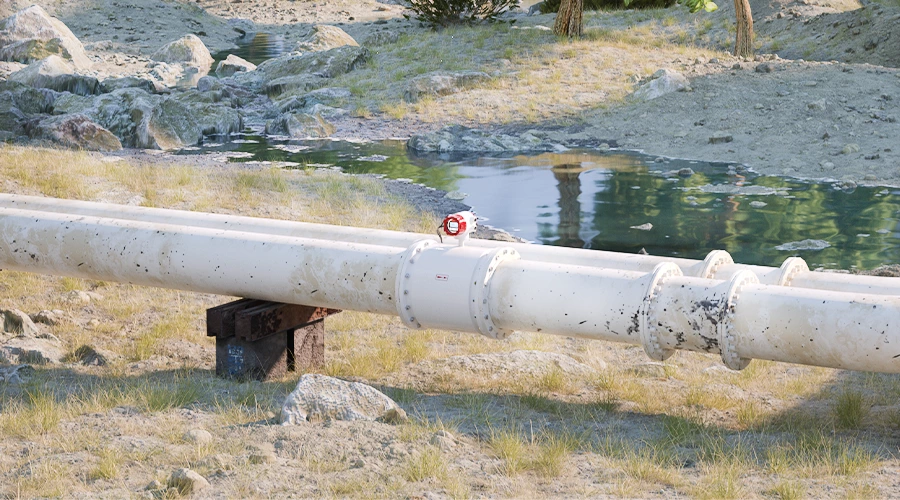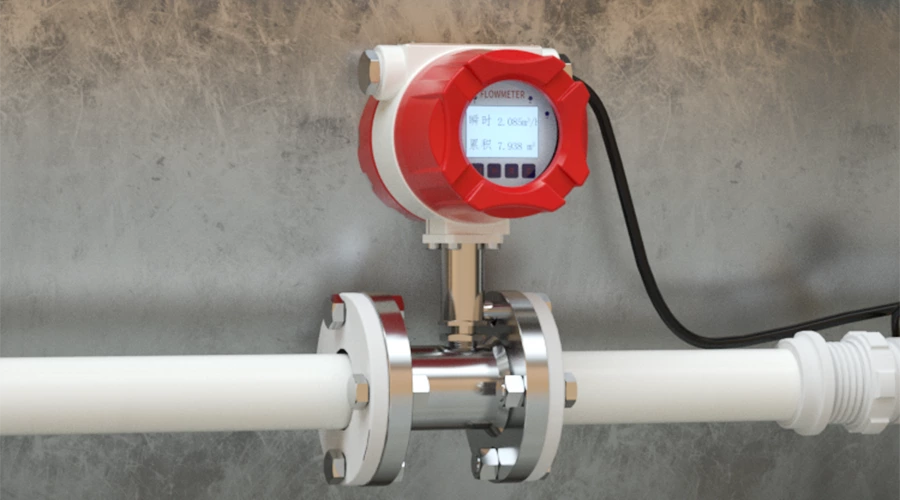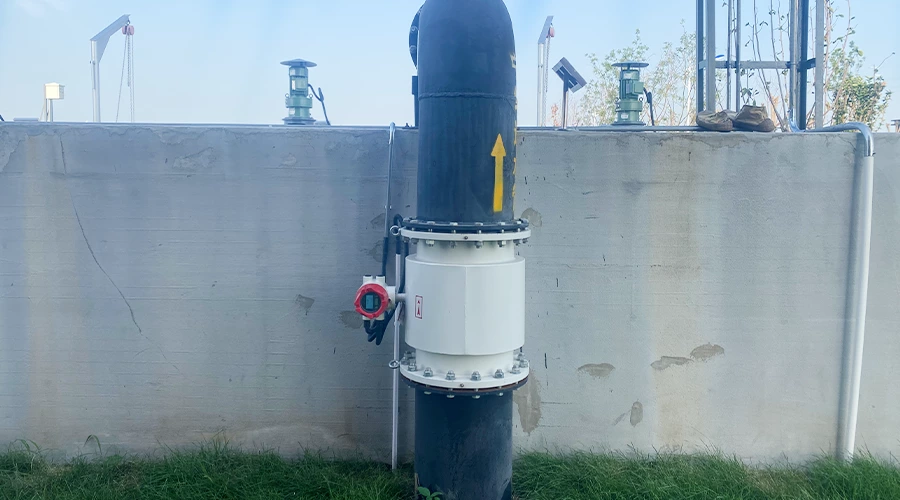Flow Meters for Agriculture Applications: A Comprehensive Guide
Introduction
Flow meters are essential tools for measuring the rate of fluid flow in various agricultural applications. These devices are used to monitor the flow of water, fertilizers, and other fluids in irrigation systems, crop spraying equipment, and other agricultural machinery. Accurate flow measurement is critical for ensuring the efficient use of resources and maximizing crop yields.
There are several types of flow meters available for agricultural applications, including mechanical (Positive displacement meters), electromagnetic, vortex, turbine, and ultrasonic meters. Mechanical flow meters are the most common and are typically used in smaller-scale systems. These devices use a rotating impeller or turbine to measure the flow rate of the fluid. Electromagnetic flow meters, on the other hand, use a magnetic field to measure the velocity of the fluid. These devices are more accurate than mechanical meters and can be used in larger-scale systems. Ultrasonic flow meters use sound waves to measure the velocity of the fluid and are ideal for measuring the flow of non-conductive liquids.
When selecting a flow meter for agricultural applications, it is important to consider factors such as the type of fluid being measured, the flow rate range, and the accuracy requirements. In addition, the meter should be designed to withstand the harsh environmental conditions often found in agricultural settings, such as exposure to dirt, dust, and moisture.
Proper maintenance and calibration of flow meters are also critical for ensuring accurate measurements. Regular cleaning and inspection can help prevent clogs and other issues that can affect the meter's performance. Calibration should be performed periodically to ensure that the meter is providing accurate readings.
Flow meters are essential tools for measuring fluid flow in agriculture applications. The selection of the appropriate flow meter depends on several factors such as the type of fluid being measured, the flow rate range, and accuracy requirements. Proper maintenance and calibration are also critical for ensuring accurate measurements and maximizing crop yields.

Why are flow meters essential in agriculture?
Agriculture relies heavily on water, fertilizers, and other liquid inputs to support crop growth and development. Inaccurate measurement of these inputs can lead to overuse or underuse, resulting in crop damage or yield loss. Flow meters provide precise measurements of liquid flow rates, allowing farmers to monitor and control the amount of inputs delivered to crops. This, in turn, optimizes crop production, reduces waste, and increases efficiency.
Types of flow meters used in agriculture
Several types of flow meters are used in agriculture, including positive displacement, turbine, electromagnetic, ultrasonic, and vortex meters. Each type of flow meter has its advantages and limitations, and the choice of the meter depends on the specific application.
Positive displacement meters
Positive displacement meters are the most common type of flow meter used in agriculture. These meters measure flow by trapping a liquid in a chamber and then measuring the volume of the liquid displaced. The positive displacement meters are highly accurate and can handle a wide range of viscosities. They are commonly used for measuring water flow rates in irrigation systems.
Turbine meters
Turbine meters measure flow by using a turbine that rotates in response to liquid flow. The speed of the turbine is directly proportional to the flow rate. Turbine meters are commonly used in agriculture for measuring flow rates of chemicals, fertilizers, and other liquids.
Electromagnetic meters
Electromagnetic meters use Faraday's law of electromagnetic induction to measure flow rates. A magnetic field is generated across the flow pipe, and as the liquid flows through the pipe, it induces a voltage that is proportional to the flow rate. Electromagnetic meters are highly accurate and can handle a wide range of flow rates and liquid types.
Ultrasonic meters
Ultrasonic meters use sound waves to measure flow rates. They work by transmitting ultrasonic waves through the liquid and measuring the time it takes for the waves to travel between two points. The ultrasonic meters are non-invasive and can measure flow rates in large pipes.
Vortex meters
Vortex meters measure flow by detecting the frequency of vortices created by the liquid flow. As the liquid flows past a bluff body, vortices are created that are proportional to the flow rate. Vortex meters are highly accurate and can handle high flow rates.
Applications of flow meters in agriculture
Flow meters are widely used in agriculture for various applications related to irrigation, fertilization, livestock watering, water treatment, fuel monitoring, and liquid feed systems.
Irrigation management
Flow meters are commonly used in irrigation systems to measure the amount of water delivered to crops. This helps farmers to optimize water use and ensure that crops receive the correct amount of water.
Fertilizer and Chemical Injection
Flow meters are used to measure the precise amount of fertilizers and chemicals injected into irrigation water or soil. This ensures that the correct amount of nutrients is delivered to crops, minimizing waste and avoiding over-fertilization.
Livestock Watering Systems
Flow meters are used to monitor the amount of water consumed by livestock, which is crucial for ensuring adequate hydration and maintaining herd health.
Water Treatment
Flow meters are used to monitor water flow rates in treatment systems, such as sedimentation tanks and filters, to optimize treatment efficiency and ensure consistent water quality.
Liquid Feed Systems
Flow meters are used to measure the amount of liquid feed consumed by livestock, ensuring that animals receive the correct amount of nutrients and avoiding overfeeding.
Flow meters are essential tools for farmers to optimize their operations, reduce waste, and improve the efficiency and sustainability of their agricultural practices.
Factors to consider when choosing a flow meter for agriculture
When selecting a flow meter for agricultural applications, there are several factors that should be taken into consideration, including:
Accuracy
It's essential to choose a flow meter that provides accurate measurements. Inaccurate readings can result in over or under-irrigation, leading to crop damage or water wastage.
Flow rate range
The flow meter should be selected based on the required flow rate range of the irrigation system. It's important to ensure that the flow meter can accurately measure the desired flow rate without compromising its accuracy.
Compatibility with liquid type
The flow meter should be compatible with the type of liquid used in the irrigation system. Different flow meters are designed to work with different liquids, so it's important to choose one that is specifically designed for use with the liquid in question.
Installation requirements
The flow meter should be easy to install and maintain. It's important to consider the installation requirements of the flow meter and ensure that it can be easily integrated into the existing irrigation system.
Selecting the right flow meter for agricultural applications requires careful consideration of these factors to ensure accurate and reliable measurement of the flow rate of the irrigation system.
Maintenance and calibration of flow meters
Like any other equipment, flow meters require regular maintenance to ensure accurate readings and optimal performance. In agriculture, flow meters are often exposed to harsh environmental conditions, such as dust, dirt, and extreme temperatures. Regular maintenance and calibration can help to extend the lifespan of the meter and prevent downtime.
Maintenance
The maintenance required for flow meters can vary depending on the type and application of the meter. However, some general maintenance procedures include:
- Regular cleaning of the meter to remove debris and buildup.
- Inspection of the meter for any physical damage, such as cracks or leaks.
- Checking the meter's connections and seals for any signs of wear or damage.
- Lubricating moving parts to prevent friction and wear.
- Replacing any worn or damaged parts.
Calibration
Flow meters require periodic calibration to ensure that they are providing accurate readings. Calibration involves comparing the meter readings to a known standard and adjusting the meter as necessary. The frequency of calibration depends on the type of meter and the application. For example, flow meters used in irrigation systems may require calibration every six months, while meters used for chemical injection may require calibration every year.
Calibration can be performed using several methods, including:
- Gravimetric method: This method involves measuring the weight of liquid collected over a specific period and comparing it to the meter's reading.
- Master meter method: This method involves comparing the readings of the meter being calibrated to a known, calibrated meter.
- In-line calibration: This method involves installing a calibration device in the flow system and comparing the readings to the meter being calibrated.
Regular maintenance and calibration of flow meters are essential to ensure accurate readings and optimal performance. By following proper maintenance procedures and scheduling regular calibration, farmers and agricultural professionals can rely on their flow meters to provide precise measurements of liquid inputs, leading to improved crop production, reduced waste, and increased efficiency.
Conclusion
In conclusion, flow meters are crucial equipment in agriculture applications. They provide accurate measurements of liquid inputs, leading to improved crop production and reduced waste. Regular maintenance and calibration of flow meters are essential to ensure optimal performance and accurate readings. By following proper maintenance procedures and scheduling regular calibration, farmers and agricultural professionals can rely on their flow meters to provide precise measurements, leading to increased efficiency and profitability. By taking care of your flow meters, you can ensure that they will continue to serve you for years to come.
FAQs
How often should flow meters be calibrated in agriculture applications?
Flow meters used in agriculture applications should be calibrated periodically, with the frequency depending on the type of meter and the application. For example, flow meters used in irrigation systems may require calibration every six months, while meters used for chemical injection may require calibration every year.
What are some common maintenance procedures for flow meters?
Some common maintenance procedures for flow meters include regular cleaning to remove debris and buildup, inspected for physical damage, checking connections and seals for wear or damage, lubricating moving parts, and replacing any worn or damaged parts.
What are the benefits of regular maintenance and calibration of flow meters in agriculture applications?
Regular maintenance and calibration of flow meters in agriculture applications can ensure accurate readings, optimal performance, extended lifespan of the meter, and prevent downtime. This can lead to improved crop production, reduced waste, and increased efficiency and profitability.
What are some calibration methods for flow meters?
Calibration methods for flow meters include gravimetric method, master meter method, and in-line calibration. The method used depends on the type of meter and the application.
Can flow meters withstand harsh environmental conditions?
Flow meters used in agriculture applications are often exposed to harsh environmental conditions, such as dust, dirt, and extreme temperatures. However, with proper maintenance and care, flow meters can withstand these conditions and continue to provide accurate readings and optimal performance.





